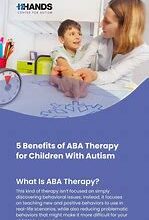
In the modern world, the need for comprehensive, tailored strategies for assisting people with distinctive learning abilities has never been more prevalent. Delving into the realm of cognitive training, one exemplary geographic region stands out – a thriving municipality nestled in the shadow of the awe-inspiring Rocky Mountains. This city’s commitment to implementing innovative behavioral modification strategies sets it apart. Through this approach, the cultivates an inclusive environment that echoes the grandeur of its picturesque surroundings.
The focal point of such interventions tends towards one scientifically supported method known as Applied Behaviour Analysis. Emanating from the vibrant city in the Centennial State, this methodology has shown impressive results in fostering social integration, independence and overall cognitive development. A closer investigation into the of these practices provides a deeper understanding of their application and effectiveness.
By shining a spotlight on these intricacies of behavior change interventions practiced in this mountainous metropolis, valuable insights emerge. These insights not only relate to their implementation but also to their impact on individuals and the community as a whole. The subsequent sections present an in-depth look into some of intelligent strategies and their impressive results in real-world scenarios.
Introduction to various measures of behavior alteration
The following section endeavors to navigate the reader through the multifaceted ocean of practices employed in behavior alteration. Without delving into specifics at this stage, it is essential to acknowledge that the methods utilized draw from a variety of scientific fields, making it an interdisciplinary approach. The primary objective of such procedures is to target and problematic behaviors in individuals, aiding their interaction with the world around them.
Understanding the components of behavior alteration

The behavior alteration measures are not a one-size-fits-all practice. The procedures vary greatly based upon the individual’s unique requirements. Broadly, these practices can be bifurcated into two sections: assessment-oriented and intervention-oriented. The assessment-oriented component is fundamentally focused on identifying the existing behavioral issues in an individual, understanding the context, and the triggers. Concurrently, the intervention-oriented is dedicated to employing proven scientific practices to alter these identified behavior patterns.
Variety in practice methods
One crucial aspect of behavior alteration measures is its flexibility. The entirety of its practice can range from rigorous all-day sessions to periodic meetings spread across weeks. Moreover, the location of these interventions can be varied too; it can happen in a dedicated clinical environment or can be organically infused in the individual’s natural like school or home. Such diversity in operation allows for a more tailored approach to each case.
In conclusion, the measures of behavior alteration are a group of scientific procedures designed to improve an individual’s ability to adapt to their surroundings. Through careful assessment and targeted experts in this field can bring about meaningful transformations in their clients’ lives.
Detailed descriptions of commonly used methods

Behavioral modification strategies have been established as reliable tools for promoting positive behavioral changes in varied fields, settings, and populations. Frequently employed in educational and therapeutic contexts, these techniques have also found use in environmental initiatives, health promotion campaigns, and parenting practices around the globe. This segment presents a meticulous explanation of some widely adopted methodologies. By applying these methods, it easier to inspire and sustain desired behavior changes – no exposition of technicalities yet.
The Positive Reinforcement approach is among the most commonly utilized and is fundamental to most behavior modification programs. This method works by employing incentives or rewards to stimulate and reinforce desirable behavior. Placing a focus on the positive consequences of actions, rather than chastising negative behaviors, engenders a more encouraging and productive environment for eliciting changes. This procedure has demonstrated its efficacy across settings and populations, contributing to its widespread and application. It is versatile and adaptable to accommodate diverse needs and circumstances.
Modeling, another frequently applied method, capitalizes on the natural human propensity to learn from observational experiences. The methodology entails harnessing “models” – individuals who demonstrate desirable behaviors – as examples for others to emulate. This approach has proven invaluable, within educational contexts, as a mechanism of promoting positive habits, attitudes, and behaviors.
A strategy known as Graduated Guidance assumes incremental steps towards the goal, progressively moving forward only when prior steps have been satisfactorily achieved. This technique is often a go-to for complex or multi-step behaviors that can be overwhelming when tackled in one go. By breaking down the process into manageable steps, it makes the learning or adjustment process more palatable and achievable. The pathway to desired behavior thus a cumulative product of small achievements, each success serving as a stepping stone to the next.
In essence, these behavior modification methods provide structured and systematic procedures designed to yield positive behavioral changes. Applying these techniques effectively requires an understanding of their foundational principles and a tactful to implementation, adjusting, and refining methods to meet specific needs and circumstances.




